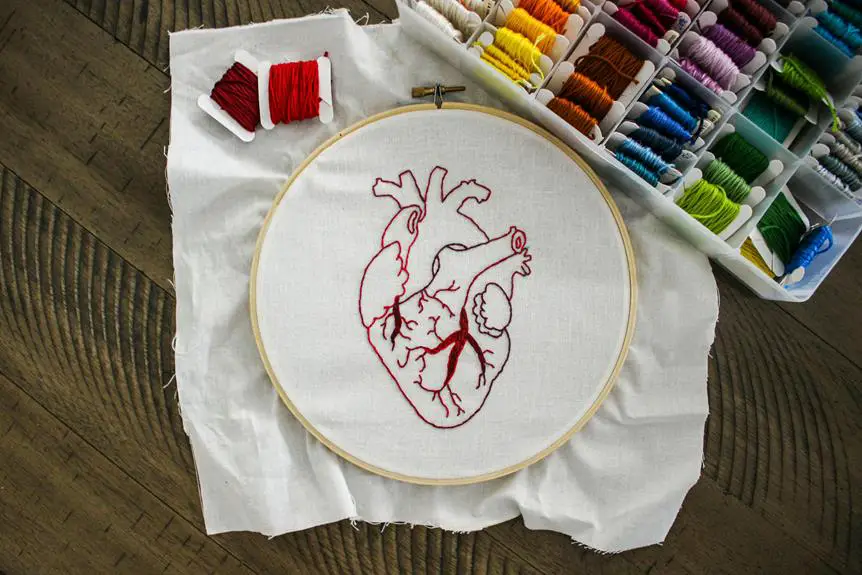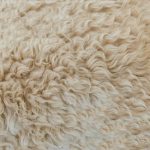When you're choosing between voile and organza, it's essential to consider the specific qualities each fabric brings to your project. Voile offers a soft drape and a lightweight feel, making it suitable for casual summer styles, while organza's crisp structure and transparency lend a touch of elegance to formal attire. Understanding these characteristics not only aids in decision-making but can also impact the overall aesthetic of your design. So, what factors should you weigh when determining the best fabric for your needs?
Table of Contents
Overview of Voile
Voile is a lightweight, semi-sheer fabric made from cotton or polyester, offering a soft drape that's perfect for flowy garments and delicate home decor. You'll often find it used in summer dresses, blouses, and curtains, as its airy quality provides both comfort and elegance. When you wear or decorate with voile, you create a sense of lightness and femininity.
This fabric is known for its versatility, allowing you to combine it with other materials to achieve unique textures and styles. It's easy to sew, making it a favorite among DIY enthusiasts and fashion designers alike. Voile can be machine-washed, but be cautious with the settings; gentle cycles help maintain its delicate nature.
You might appreciate that voile comes in various colors and patterns, so you can always find something that fits your aesthetic. Additionally, its semi-sheer quality allows for layering, giving you the freedom to play with transparency in your outfits or home decor. Overall, voile is a charming choice that brings a touch of sophistication while remaining practical for everyday use.
Characteristics of Organza
Organza is a thin, crisp fabric that often features a sheer finish, making it ideal for formal wear, bridal gowns, and elegant home decor accents. One of the standout characteristics of organza is its stiffer texture compared to other sheer fabrics, which allows it to hold shapes beautifully. This quality makes organza perfect for creating structured silhouettes in dresses or voluminous layers in skirts.
You'll also appreciate organza's lightness and breathability, which make it comfortable to wear even in warmer climates. The fabric is typically made from silk or polyester, providing a luxurious feel while remaining relatively affordable. Its glossy surface catches the light beautifully, adding a touch of sophistication to any garment.
When it comes to care, organza is relatively easy to maintain; you can hand wash it or use a gentle cycle in the machine if it's polyester. However, silk organza requires more delicate handling. Remember that organza is prone to wrinkling, so you might need to iron it carefully on a low setting.
Key Differences Between Fabrics
When comparing fabrics, you'll notice several key differences in texture, structure, and suitability for various applications. Voile and organza, while both lightweight, serve distinct purposes.
| Feature | Voile | Organza |
|---|---|---|
| Texture | Soft and slightly crinkled | Crisp and sheer |
| Weight | Lighter and more flowing | Stiffer and more structured |
| Transparency | Semi-transparent | Fully transparent |
| Breathability | Highly breathable | Less breathable |
| Common Fiber | Typically cotton or polyester | Often silk or nylon |
Voile tends to be softer and drapes more fluidly, making it suitable for garments that require movement and comfort. Organza, on the other hand, holds its shape better, which is ideal for structured designs and formalwear.
Common Uses for Voile and Organza
You'll find that voile is commonly used for lightweight dresses, blouses, and curtains, while organza shines in formal wear, such as evening gowns and wedding dresses.
Voile's soft texture and breathable qualities make it ideal for casual summer outfits, allowing for comfort while still looking stylish. You might also see voile in children's clothing and light wraps, perfect for warm weather events.
On the other hand, organza is the go-to fabric when you want to make a statement. Its crisp, sheer nature adds volume and structure, making it perfect for layered looks.
Besides evening wear, organza is often used in bridal veils and overlays, giving a sophisticated touch to any outfit. You'll also find it in decorative elements like ribbons and gift wrap, enhancing a special occasion with its elegant appearance.
Both fabrics have their unique charm, and understanding their common uses helps you make informed choices for your next project.
Whether you're crafting a light, breezy garment or planning an extravagant dress, knowing when to use voile or organza can elevate your designs significantly.
Tips for Choosing the Right Fabric
Understanding the common uses of voile and organza can help you choose the right fabric for your project based on the desired look and functionality. Both fabrics have unique qualities, so consider these tips when making your decision:
- Purpose: Determine what you need the fabric for. Voile works well for lightweight curtains or summer dresses, while organza is ideal for formal wear or embellishments.
- Texture: Feel the fabric. Voile has a soft, flowing texture, perfect for soft silhouettes. Organza is crisper and more structured, great for adding volume.
- Transparency: Consider how much light you want to let in. Voile offers a more translucent appearance, while organza is more sheer, providing a more dramatic effect.
- Care Instructions: Check the care requirements. Voile is generally machine washable, making it low maintenance, whereas organza often needs more delicate handling.
Frequently Asked Questions
Can Voile and Organza Be Blended With Other Fabrics?
Yes, you can blend voile and organza with other fabrics like cotton or silk. This combination enhances their unique qualities, adding texture and depth, making your projects more versatile and visually appealing. You'll love the results!
How Do I Care for Voile and Organza Fabrics?
To care for voile and organza fabrics, hand wash them in cold water with a gentle detergent. Avoid wringing; instead, lay them flat to dry. Iron on low heat, using a cloth to prevent damage.
What Is the History of Voile and Organza Fabrics?
You'll find that both voile and organza have rich histories. Voile originated in France during the 19th century, while organza traces back to ancient China, evolving in use and popularity throughout the years across various cultures.
Are Voile and Organza Suitable for Outdoor Use?
When considering outdoor use, both fabrics have their pros and cons. You'll find that voile's lightweight nature offers breathability, while organza's sturdiness resists wind and sun. Choose based on your specific needs for durability and appearance.
How Do I Determine the Quality of Voile and Organza?
To determine the quality of voile and organza, check their weave tightness, feel for softness, and inspect for any imperfections. Higher quality fabrics will appear more vibrant and drape elegantly without being overly stiff or fragile.







